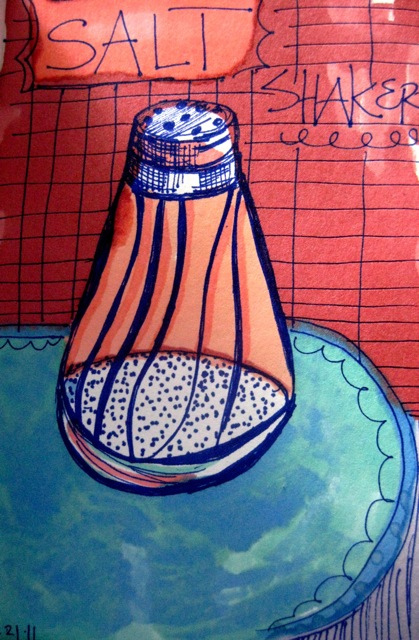Shaking salt
 Like salty foods? You are not alone. Americans’ consumption of sodium is up 50% since the 1980s. On average, we consume more than 3,400 milligrams of sodium a day, far exceeding the 1,500 to 2,300 milligram daily limit recommended by the government.
Like salty foods? You are not alone. Americans’ consumption of sodium is up 50% since the 1980s. On average, we consume more than 3,400 milligrams of sodium a day, far exceeding the 1,500 to 2,300 milligram daily limit recommended by the government.
In 2009, the Center for Disease Control and Prevention (CDC) stated that 70% of adults should restrict their sodium to 1,500 milligrams a day (approximately two-thirds of a teaspoon). The adults they identified for the restriction were those with hypertension, African Americans and individuals over the age of 40. If you are in one of these groups (and roughly two out of every three of us are), reducing sodium can lower your blood pressure — and your chances of a heart attack or stroke. However, to stay within the limit, you need to eat fresh foods and cook at home most of the time — a challenging task for even the most health-conscious.
To start you on the path less salty, BeWell has gathered and summarized the current recommendations:
Eating out
About three-quarters of the sodium we consume comes from processed and restaurant foods. Each restaurant varies, but a meal at a restaurant can easily exceed your day’s worth of sodium — and sometimes equates to as much as three days’ worth. When preparing your own food is not an option, ask the chef not to use salt or MSG. Ask for your sauce on the side. Trim your portion size as soon as your food is served.
Flavor
Cutting down on salt doesn’t mean your food has to be bland. Believe it or not, your taste for salt is a learned preference that disappears quickly. After a few weeks of a sodium-restricted diet, your taste buds will adjust and the food that once tasted good will taste too salty. Removing the sodium will also allow you to notice other flavors previously masked by salt. It will also encourage you to explore other herbs and spices like rosemary, garlic powder, parsley, tarragon and curry powder.
Reading labels
Look for foods labeled “no salt added” or “unsalted.” Don’t be deceived by food labeled “reduced sodium,” which means the food has 25% less sodium than the original, but could still be high in sodium. Checking the sodium contents of similar brands will also pay dividends, as levels vary widely. While reviewing the list of ingredients, look for sodium listed as MSG (monosodium glutamate), baking soda (sodium bicarbonate), disodium phosphate, sodium benzoate, sodium propionate, sodium sulfite, and sodium nitrite/nitrate.
Choose fresh
Processing food boosts sodium. Frozen meals, canned foods and cured meats are particularly high in sodium, but nearly all processed foods — from condiments to candy — contain sodium. Choose whole vegetables and fruits, unprocessed grains and fresh meat, poultry and fish whenever possible.
For further information from the CDC, visit http://www.cdc.gov/salt.
By Julie Croteau
Related stories:
Choosing better proteins
